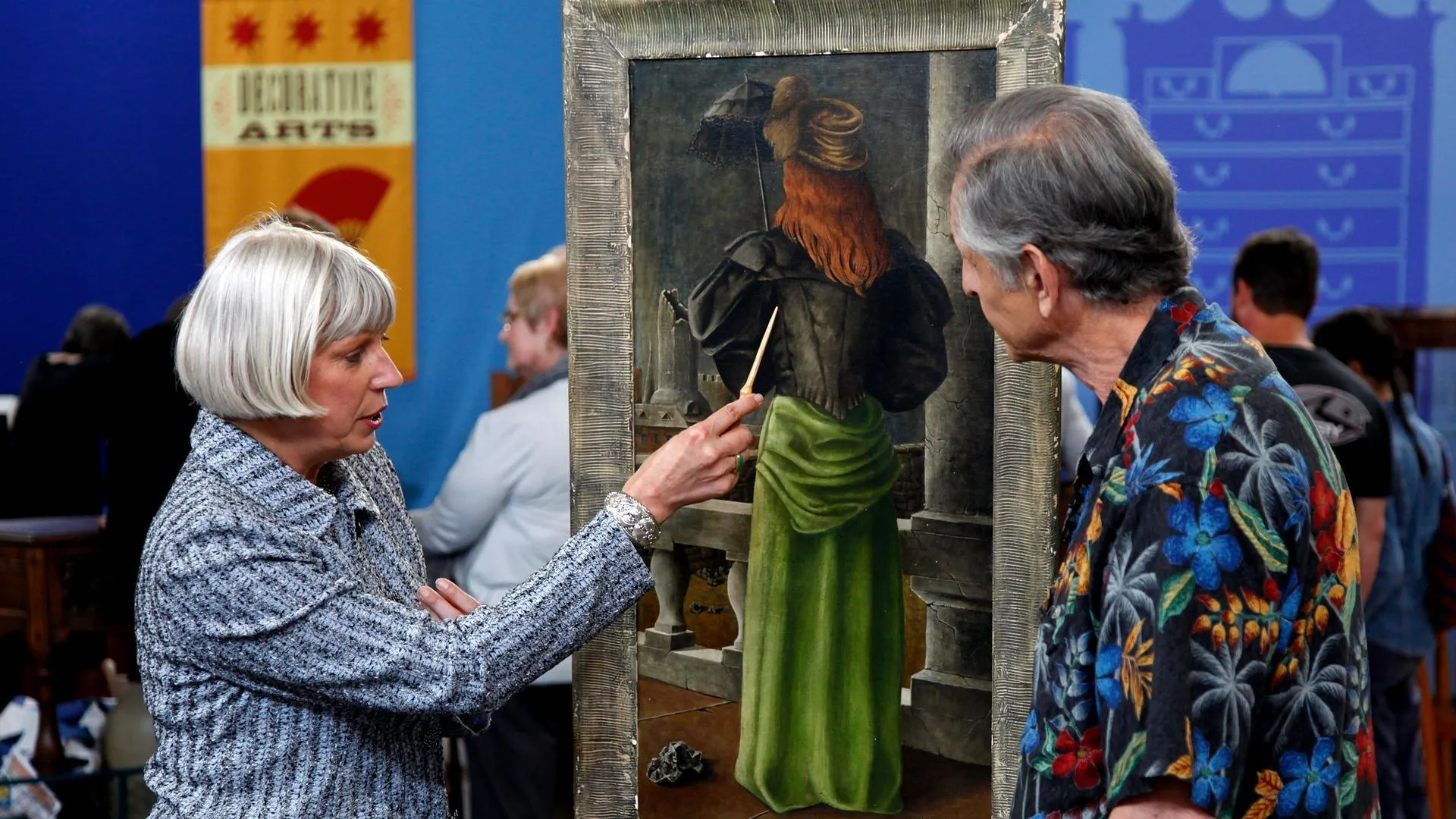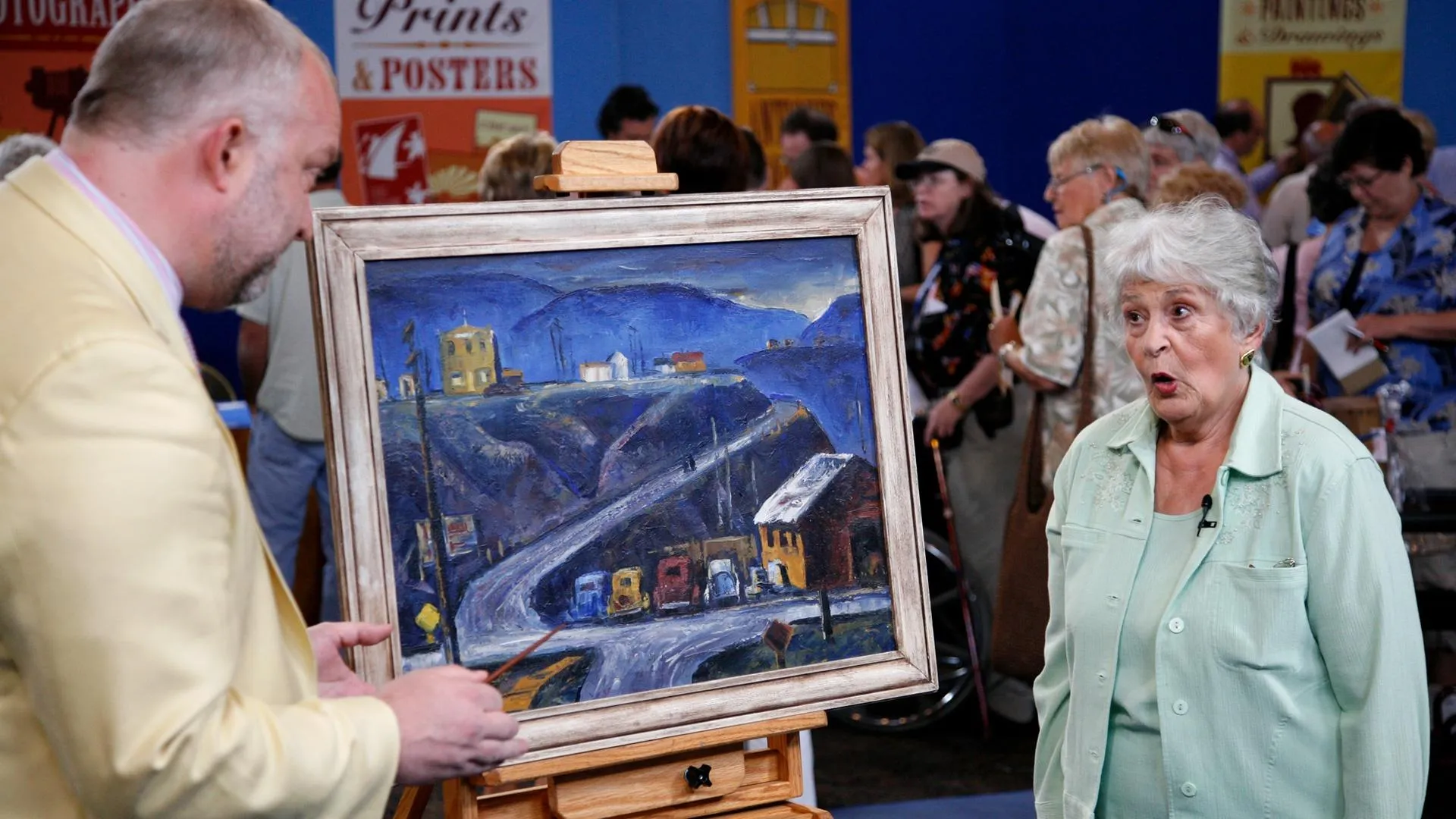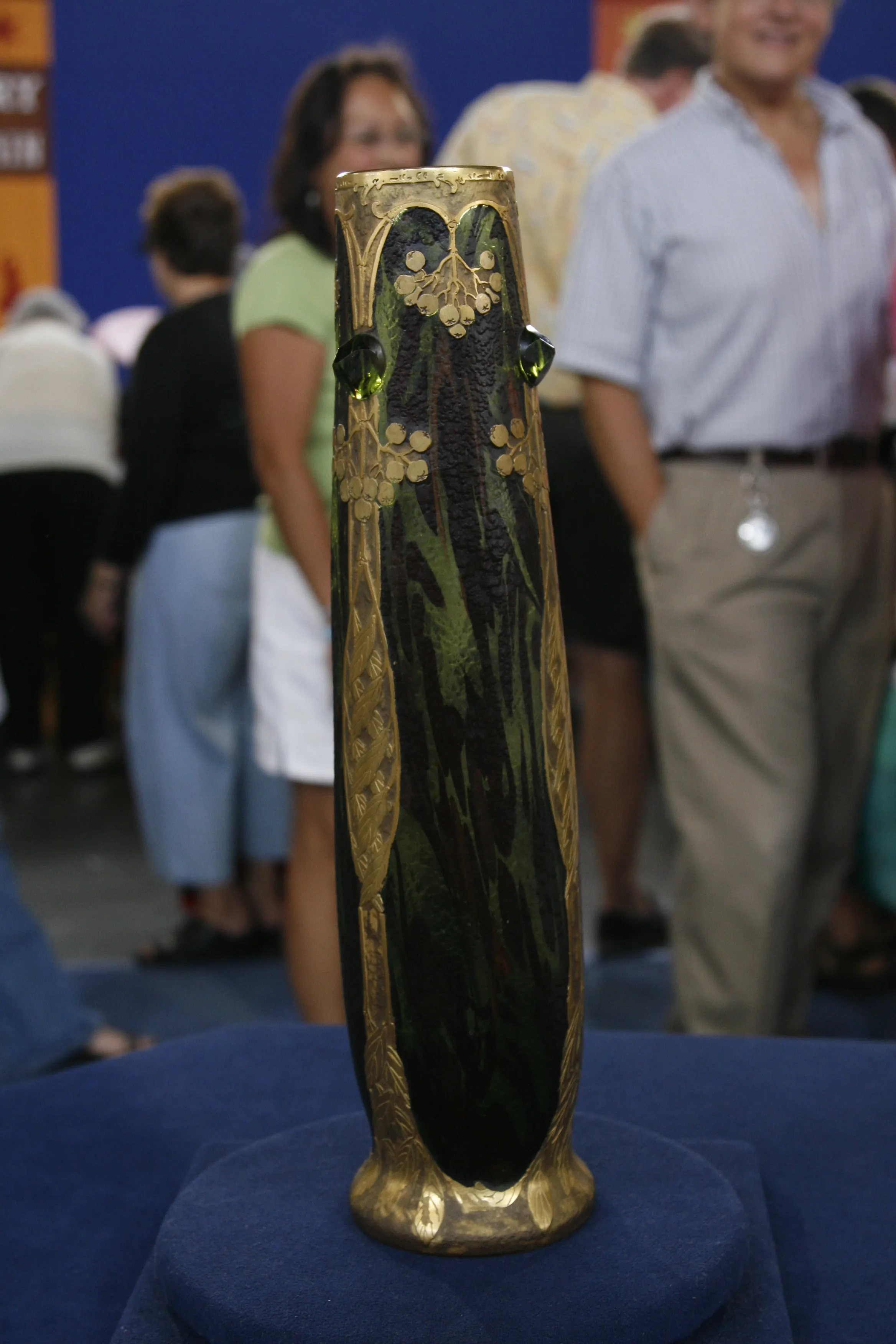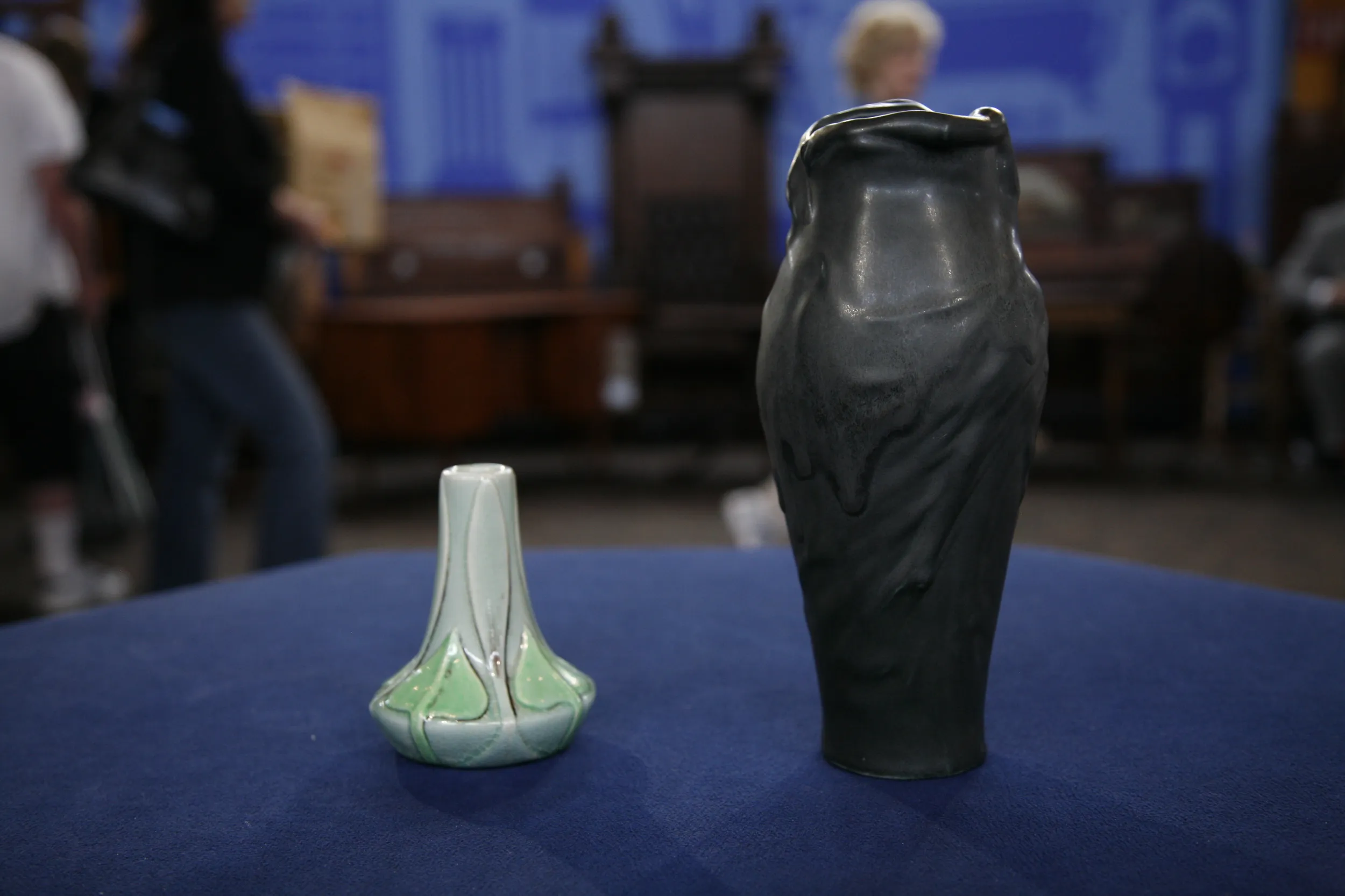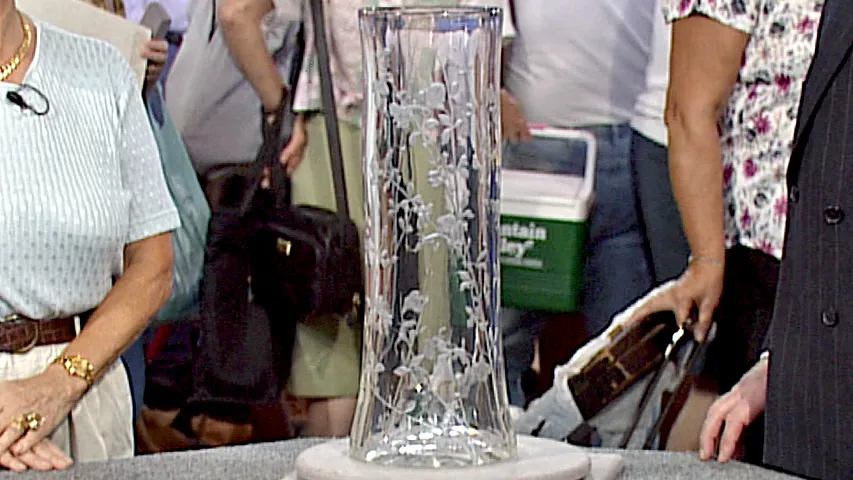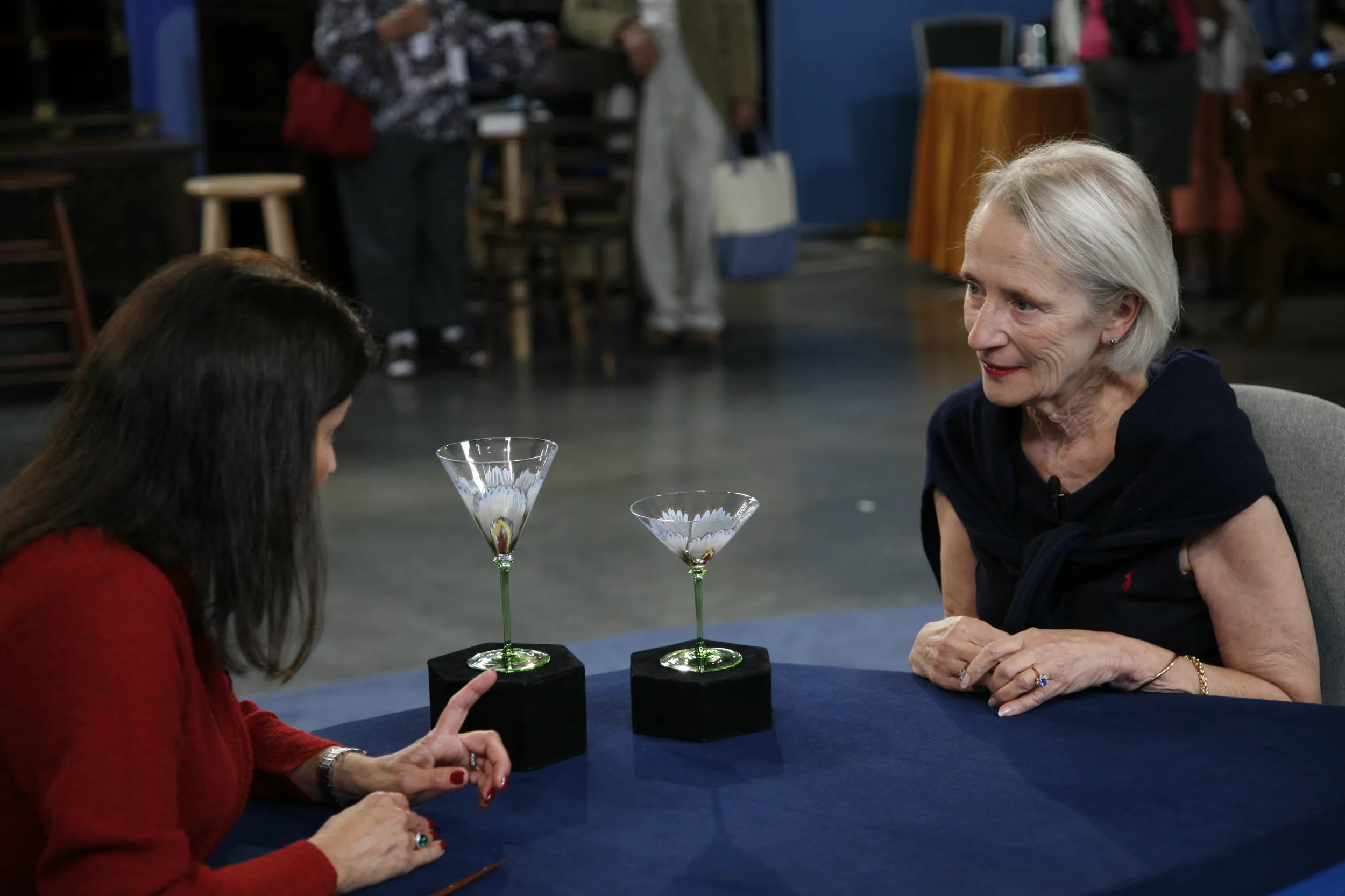APPRAISER: How long have you had this piece?
GUEST: It's been in my possession for a week, but it was given to me by my dad.
APPRAISER: How long ago?
GUEST: Not very long ago-- this morning, actually.
APPRAISER: He said, "Well, it's yours now." Well, what's the family history with this piece?
GUEST: My great-great-grandfather was a Western painter, Harvey Young. And this was a friend of his. Guess it was entered in a world expo or state expo or something, and it was a gift from that artist friend to him and so it's passed down through the family that way.
APPRAISER: Well, it's a pretty special piece for a lot of reasons. First of all, it's a piece by Artus Van Briggle, and we've done Van Briggle pottery here a number of times in the past. He was a famous artist-- worked in Cincinnati, he had tuberculosis, went to Colorado Springs because the salubrious climate was thought to be best for people suffering from that disease. And he lasted a couple of years down there, but as they say about tuberculosis, your candle burns brightest just before it's snuffed, and he was at his creative peak in 1904, which is when this piece was made. If we look at the bottom of the pot, we can see the double A mark, which is for Artus and Anna Van Briggle. It says "Van Briggle", it's got a Roman numeral III, which is the clay composition. It's also got the date "1904" written. It's covered with glaze, a little hard to see. If you look at the way Van Briggle is signed, the way the Gs are little semicircles with a straight line dropping down from them, that's Artus's own signature. So we know that at the very least he signed this pot. This particular form is called "Climbing for Honey." It's a couple of bears climbing up a beehive. It's a rather famous one, and my recollection is it's the first year this piece was made. And this looks like a prototype to me because it's covered with ridges which look like throwing rings. Now, normally Van Briggle molded pots, but this one has a tremendous amount of handwork done on it and may be individually sculpted. It's also pretty good because he used two distinctly different matte green glazes. We have the background glaze, which is feathered, and then a solid matte green for the bears. It makes the bears really jump out from the surface. They made this pot for a long time. I've had pieces that were done in the early '30s that were replicating the same form. But this is an extremely early one. In and of itself, it's a really good thing. We know Van Briggle was alive because his signature is on it. On top of that, we have this coin here, this medallion from the 1904 St. Louis World's Fair. And some of the best artists we had in America were exhibiting in St. Louis at the exposition, and Artus Van Briggle was one of those people. Now, we're not certain that because you have this vase dated '04 and because we have this medal from the exposition from 1904, that this was the piece that won the medal in 1904, but I think it was. And we'll do some research and we'll get back to you on that. But we're going to assume for the time being that it's just a really good early example of "Climbing for Honey." There is a little bit of damage-- one of the ears has some nicks on the top. I think the damage on this piece is so minor, the piece is so good, it's such an excellent example of the form, that I think this is one of those rare instances where the damage is not going to have any impact on value whatsoever. Knowing only that, the value on this piece at auction would be between $20,000 and $30,000.
GUEST: Holy cow.
APPRAISER: Okay, and I'm guessing you're surprised because you walked in here with your finger in the top and it not being wrapped.
GUEST: Uh, yeah.
APPRAISER: This medal by itself is worth maybe $500. But this pot with this medal, if we prove it's from the exposition, maybe as much as $30,000 to $40,000. It's a major piece of Van Briggle.
GUEST: Wow, that is amazing. Amazing.

